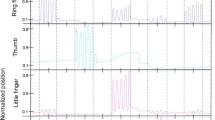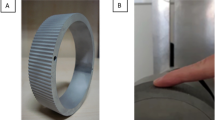Abstract
Inter- and intra-sensory modality matching by 8-year-old children diagnosed as having hand-eye co-ordination problems (HECP) and by a control group of children without such problems were tested using a target-location and pointing task. The task required the children to locate target pins visually (seen target), with the hand (felt target) or in combination (felt and seen target), while pointing to the located target was always carried out without vision. The most striking finding, for both the control and the HECP children, was the superiority of performance when the target had to be located visually. When combined scores for both hands were analysed, the HECP children showed inferior performance to the control children in both inter- and intra-modal matching. Analyses of the scores achieved with the preferred and non-preferred hand separately, however, demonstrated that the differences between the HECP and the control children could, in the main, be attributed to lowered performances when the non-preferred hand was used for pointing to the target. When pointing with the preferred hand, the only significant difference between the groups was when the target was visually located, the control children showing superior performance. Pointing with the non-preferred hand gave rise to significant differences, in favour of the control children, when the target was located visually, with the hand or in combination. These findings suggest that earlier studies, using only the preferred hand or a combination of the scores of both hands, might need to be qualified. Putative neurological disorders in the HECP children are invoked to account for the poor performance with the non-preferred hand.
Similar content being viewed by others
Author information
Authors and Affiliations
Additional information
Received: 31 May 1996 / Accepted: 31 October 1996
Rights and permissions
About this article
Cite this article
Sigmundsson, H., Ingvaldsen, R. & Whiting, H. Inter- and intra-sensory modality matching in children with hand-eye co-ordination problems. Exp Brain Res 114, 492–499 (1997). https://doi.org/10.1007/PL00005658
Issue Date:
DOI: https://doi.org/10.1007/PL00005658




